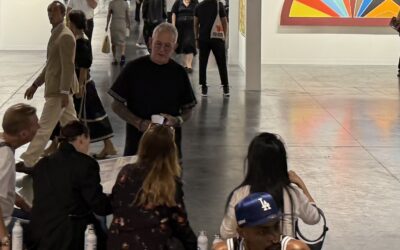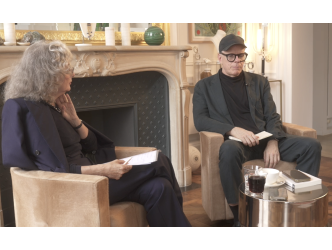Aix en Provence
It’s a safe bet that had Cézanne not been from Aix-en-Provence, the history of modern art would have gone down a very different path. In the final years of his life, the painter—whom Picasso would later call “the forefather of us all”—often returned to paint a site belonging to family friends in the pine-covered hills just outside of Aix: the Bibémus Quarry.
Bibémus Quarry
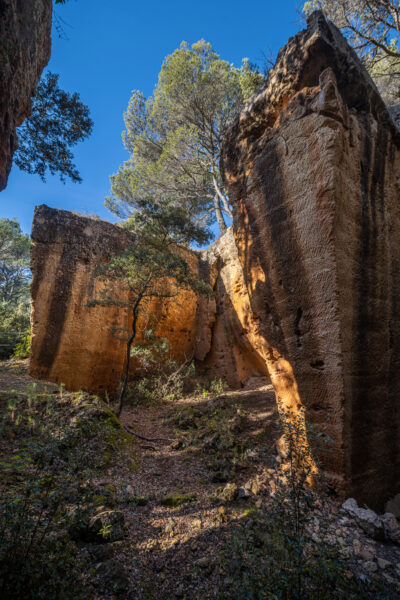
Bibémus Quarry
In the 18th century, this quarry supplied the stones used to build the majestic façades of the Cours Mirabeau, Aix’s grand thoroughfare. By the early 20th century, the site, overtaken by vegetation, took on curious new forms.
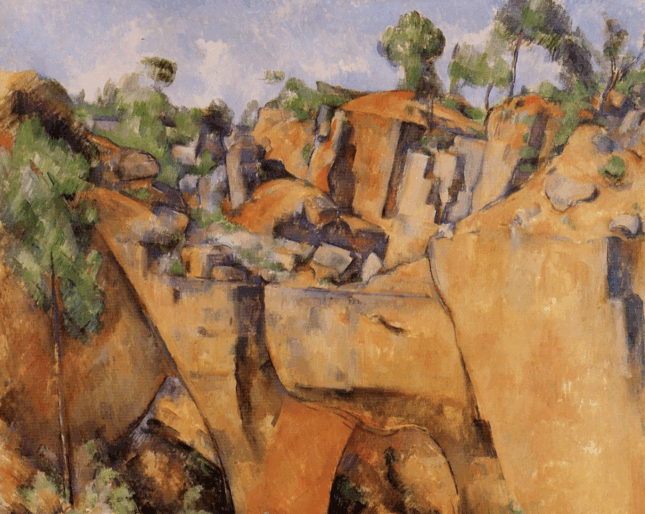
The rocks, carved at right angles, resembled cubic structures. Today, we often hear repeated Cézanne’s famous declaration: “We must treat nature by means of the cylinder, the sphere and the cone.” One can imagine that this advice from the master who would go on to shape a lot of modern painting, especially Cubism, was born at Bibémus.
130 works
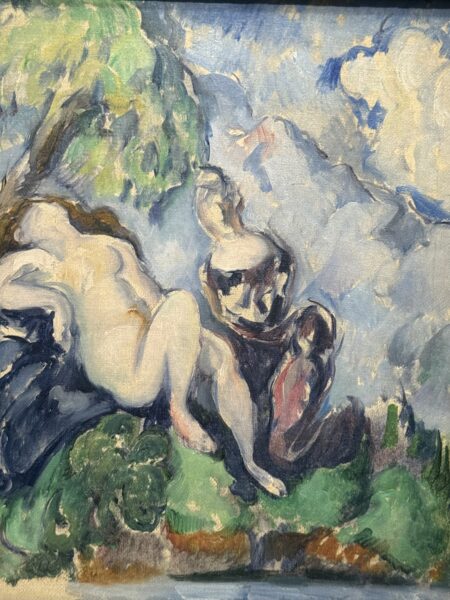
More broadly, Aix-en-Provence—with its honeyed light, its verdant countryside and of course the nearby Mont Sainte-Victoire—was the cradle and the ferment of Cézanne’s vision (See here a report about a Cézanne portraits exhibition). The Musée Granet in Aix is now devoting a major exhibition to its native son. Comprising 130 works, including many exceptional loans from around the world, it is an international-scale event—and quite simply, an outstanding one.
Jas de Bouffan, Atelier des Lauves
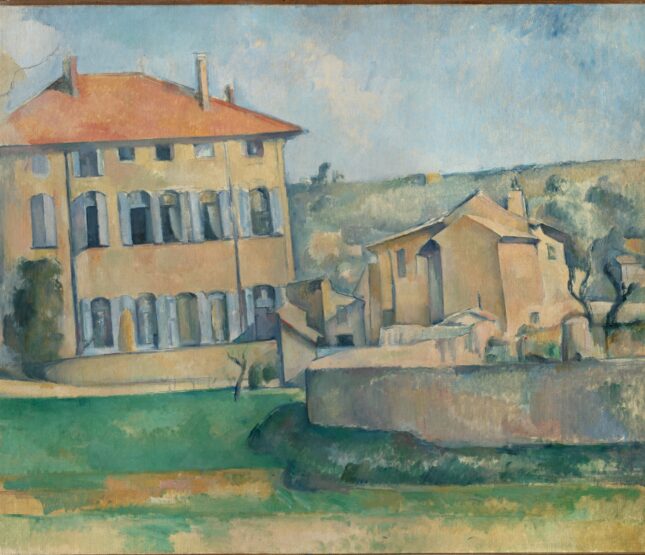
The exhibit’s lucid curatorial intent is to place Cézanne back in his personal environment: the Jas de Bouffan. This large house with its vast grounds, still standing though now surrounded by rather uninspiring buildings, was once the Cézanne family’s country home. The painter himself lived there from 1859 to 1899. Restored according to best practices, the property is now open to visitors, as is the artist’s final studio, the Atelier des Lauves.
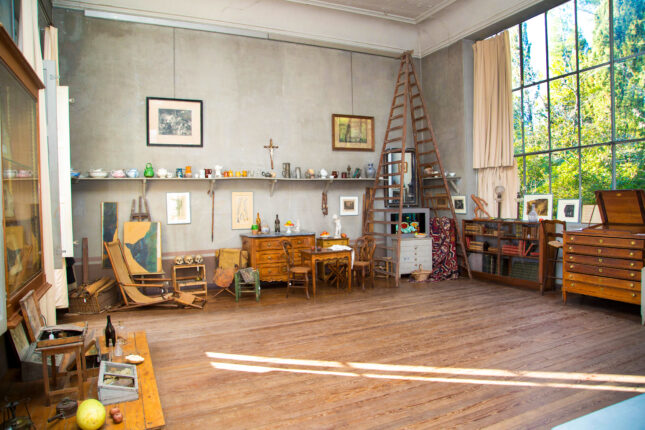
Atelier des Lauves
Modern genius
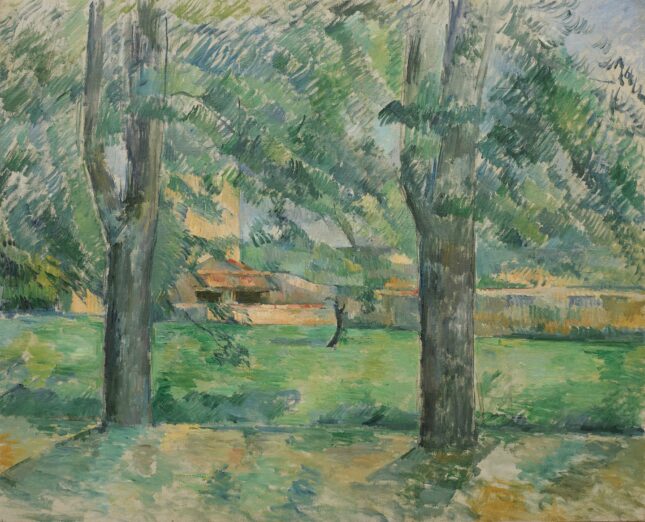
The exhibition gets straight to the point. Through the prism of Cézanne’s life in Aix, it traces the emergence of the artist’s modern genius, structured by theme. The marvel lies in the fact that this provincial boy—granted, from a bourgeois family, which gave him a certain financial latitude—chose to step back from the Parisian scene in order to find a voice entirely his own.
One that would shape the work of Picasso, Matisse and countless others to this day. Although, during his lifetime, Cézanne sold little besides what he placed with the dealer Ambroise Vollard, whom he met at the age of 55.
Cézanne freedom
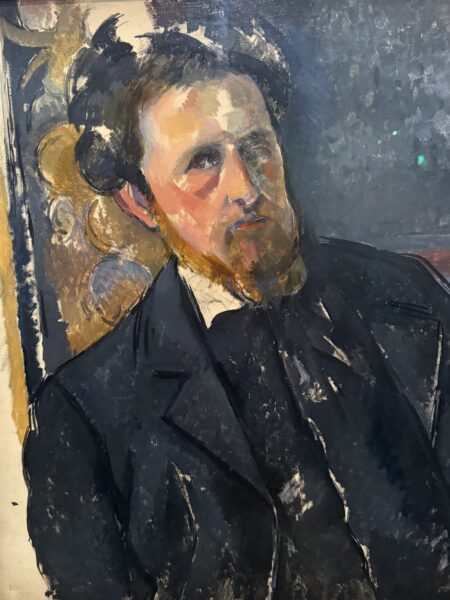
Paul Cézanne
Cézanne’s freedom is evident, for instance, in his use of the untouched white of the paper or canvas to animate his compositions. Such paintings seem deliberately unfinished. This holds true in his landscapes but also in his portraits—such as the sublime Gardener Vallier (1906), one of his final works, on loan from the Tate, in which he renders shadow and light with masterful subtlety. There is also a certain sensuality in humanizing the image by revealing the brushstrokes that compose it.
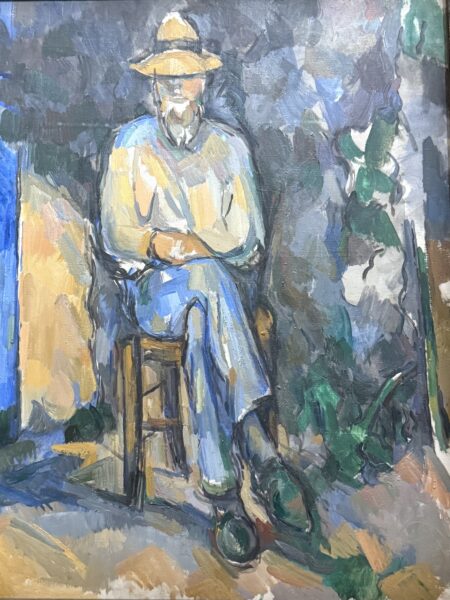
Denis Coutagne
Indeed, one shouldn’t overthink subject matter in Cézanne. He famously painted his wife Hortense in an unflattering, almost crude manner. “I paint my wife as I paint an apple,” the co-curator Denis Coutagne quotes Cézanne as having once said. In this, he follows the path of Rembrandt. (See here the report about the auction of a small portrait of Madame Cézanne sold for 7.3 million on May 2025)
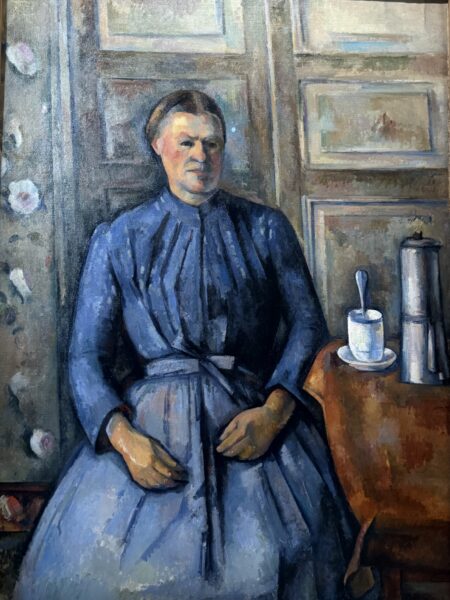
David Nash
“What mattered to him were volume, form, color and light,” notes David Nash, British co-author of Cézanne’s catalogue raisonné.
Science of imbalance
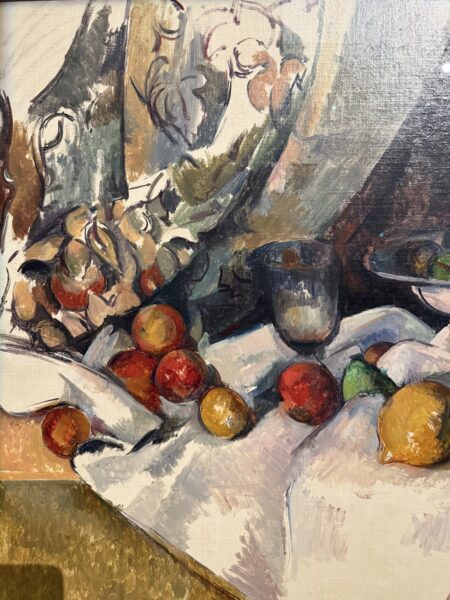
The Aixois also practices a kind of science of imbalance in his compositions. In the fascinating “Card Players” from the Musée d’Orsay (Qatar is believed to have purchased another version of The Card Players for $250 million) just as in his glorious still lifes—which move from deep blues to luminous yellows, punctuated by oranges—the tabletops tilt precariously, as if the apples might at any moment roll off. As if the table were twisting itself to better display the fruits it holds.
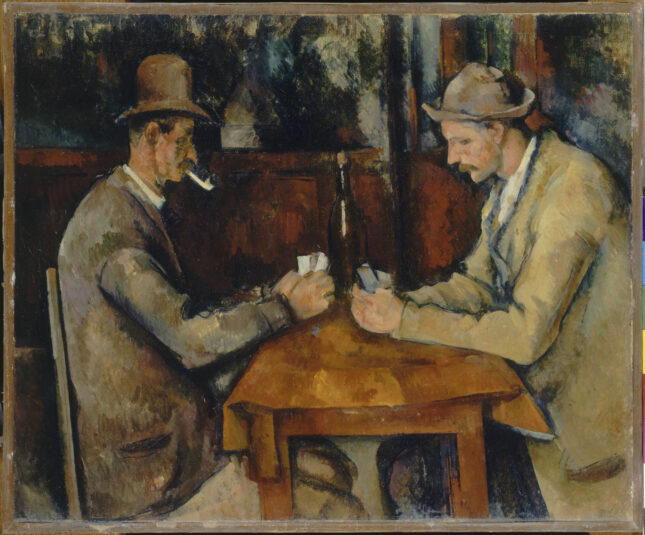
It’s a deliberate strategy for holding the viewer’s eye.
The Bathers series
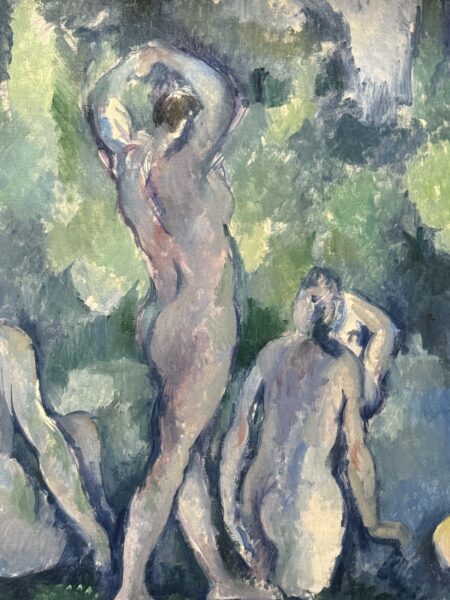
Lastly, the Bathers series—pursued, as Vollard recounts, as an unattainable ideal—is like a symphony of flickering greens and blues that seem to evoke the Mistral, the famous southern wind, rustling through the leaves.
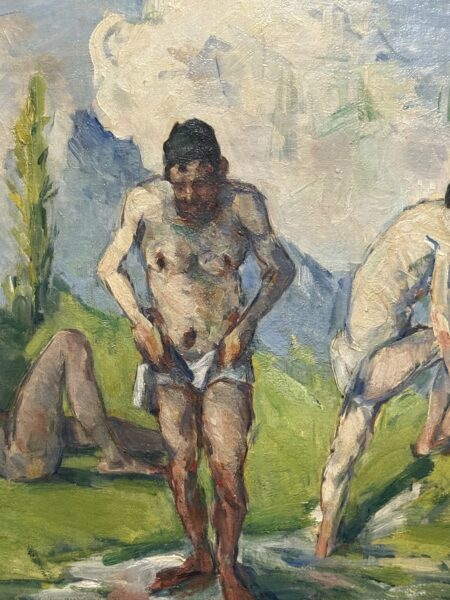
The heroes of these scenes are bodies with indistinct faces who gesture, flail, dress and embrace, caught in mid-action as if in a freeze-frame of a dance. As always, Cézanne strives for the impossible: to express movement within the fixity of an image.
In the 21st century, “the forefather of us all” remains as riveting as ever.
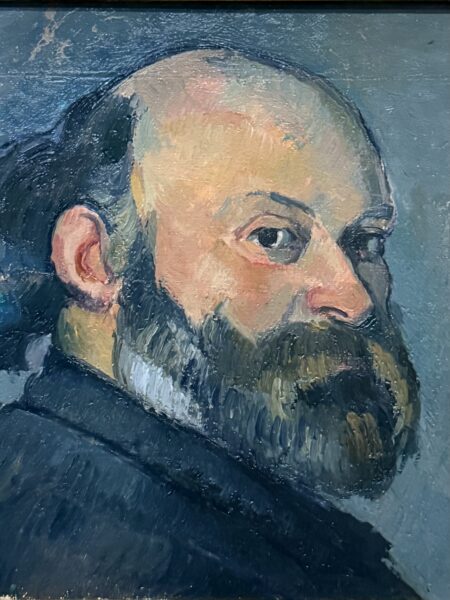
Through October 12
www.museegranet-aixenprovence.fr
Support independent news on art.
Your contribution : Make a monthly commitment to support JB Reports or a one-off contribution as and when you feel like it. Choose the option that suits you best.
Need to cancel a recurring donation? Please go here.
The donation is considered to be a subscription for a fee set by the donor and for a duration also set by the donor.



